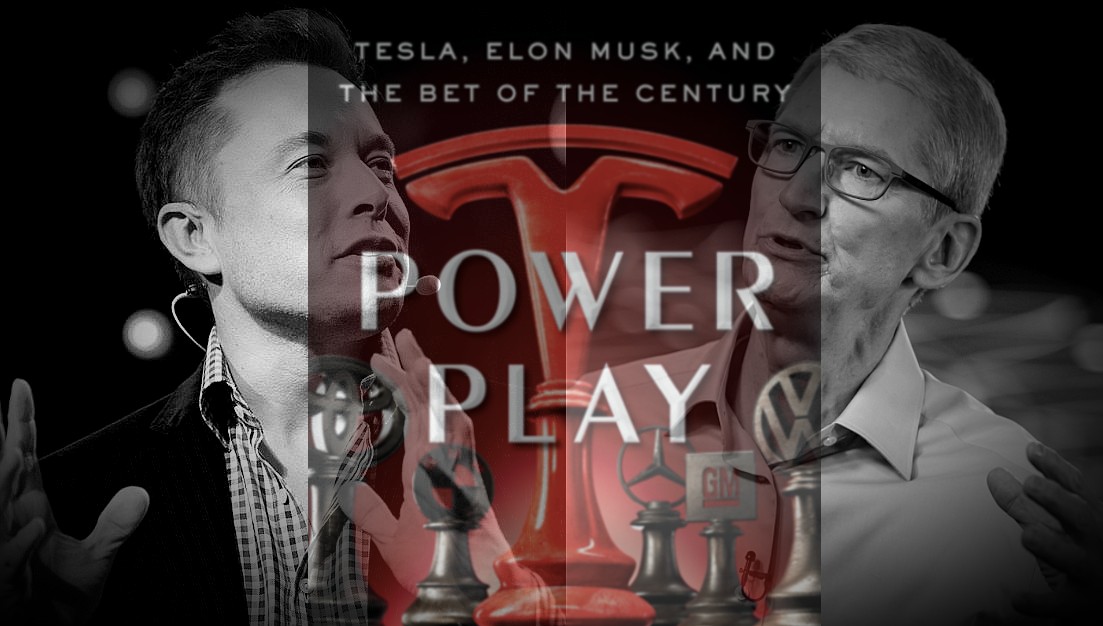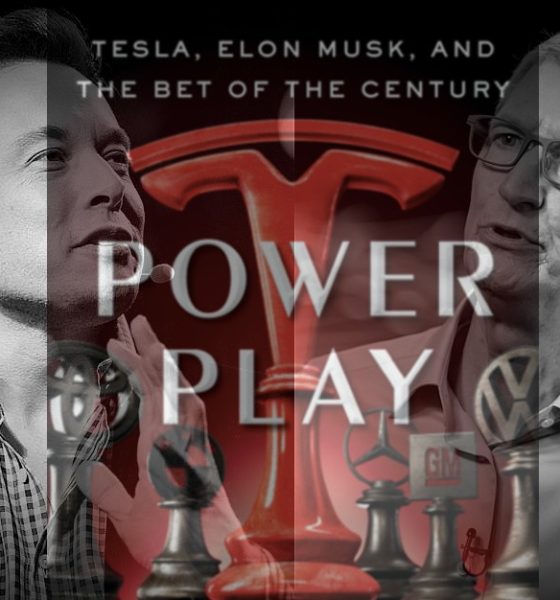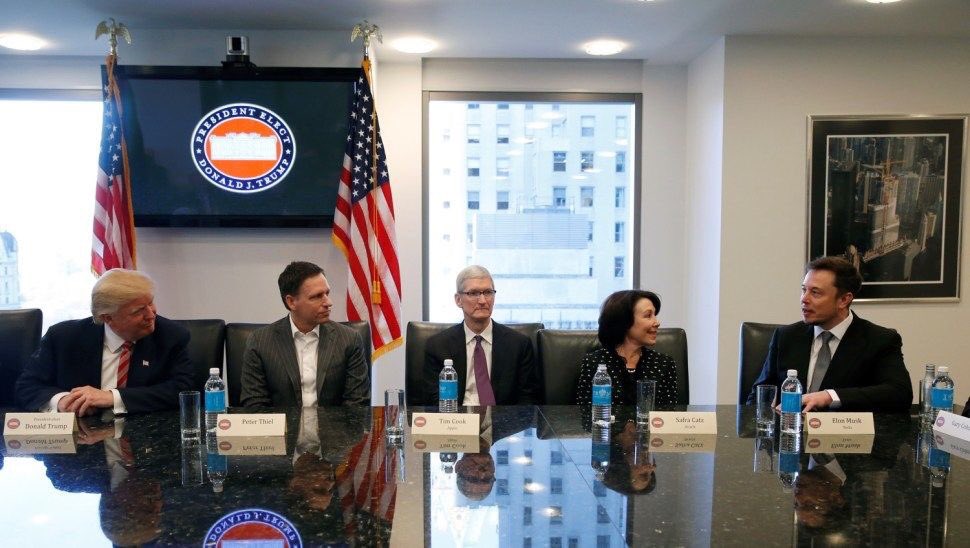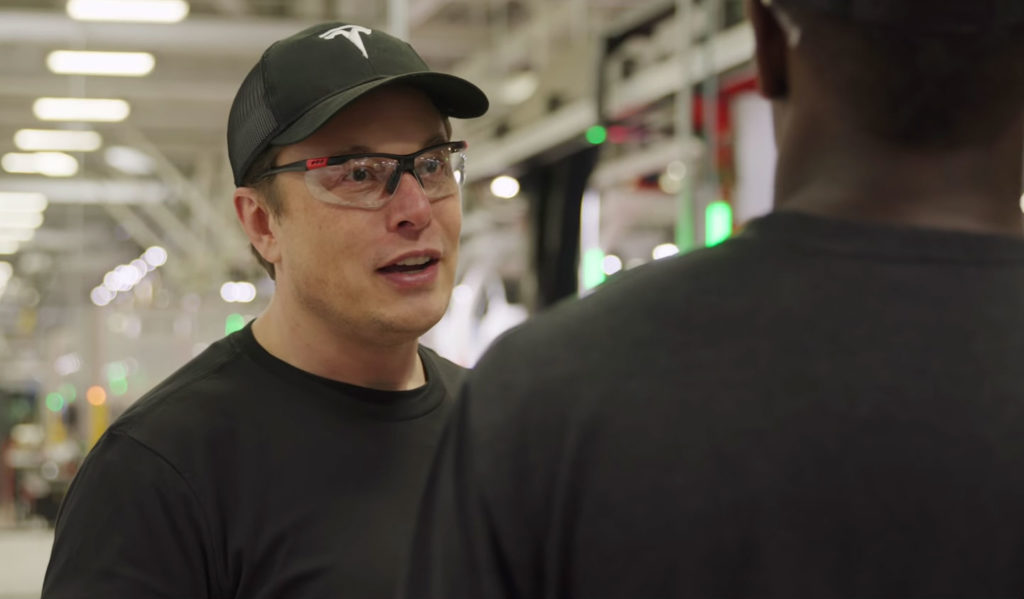

News
Tesla Power Play: Why running a contested Elon Musk narrative is playing with fire
Award-winning journalist Tim Higgins‘ book, “Power Play: Tesla, Elon Musk, and the Bet of the Century,” is among the most recent explorations into the fascinating character of Elon Musk. But unlike other works such as the still-definitive biography from writer Ashley Vance, Higgins’ book chronicled Tesla’s story during the Model X and Model 3 ramp (among others), periods that Musk himself admitted were among the most challenging times of his professional life.
Filled with stories from numerous sources and spanning Tesla’s history from its early days to last year’s pandemic, Power Play painted a picture of how an incredibly determined Elon Musk practically willed Tesla into being, and how his ego and pettiness caused the company to pay the price more than once. This was a point that moderate Tesla critics would argue: Tesla is a success today not because of its CEO, but in spite of Elon Musk.
After all, as the book noted in its Prologue, Musk may be a very public figure, but there is still a question surrounding him. “Is Elon Musk an underdog, an antihero, a con man, or some combination of the three?” Higgins noted in the book.
A Strong Story with Strong Denials
A book written about Tesla’s most turbulent years is bound to have some controversial elements. And in Power Play, few excerpts would be as controversial as a supposed call between Tesla CEO Elon Musk and Apple CEO Tim Cook in 2016. At the time, Tesla was in dire financial straits as it attempted to produce the Model 3 and master the Model X’s production. According to the book, Tim Cook then had an idea: Perhaps it would be a good idea to buy Tesla. Musk reportedly proved interested, but on one condition: he stays on as CEO.
Cook thought the condition was reasonable. After all, when Apple bought Beats in 2014, it decided to keep the company’s original founders. Musk, however, supposedly clarified his request, stating that he’d have to be the CEO of Apple. Gobsmacked at the request, Cook reportedly gave Musk a solid “F*ck you” before hanging up the phone.
The anecdote was shocking enough, and it prompted quite a lot of coverage from the mainstream media, several of whom argued that the story was believable. This was despite the story being denied by both Musk and Cook. Last year, Musk remarked on Twitter that he did try to arrange a meeting with the Apple CEO during the Model 3’s most painful days, but Cook declined the meeting. Cook, on the other hand, clearly told The New York Times‘ Kara Swisher during an appearance at the Sway podcast that he’d never spoken to the Tesla CEO.

Power Play did mention that Cook denied the anecdote presented in the book, though it did not include Musk’s comments about him and the Apple CEO never speaking with each other. The book mentioned, however, that while the two executives claimed to have never spoken to each other, Musk and Cook have been photographed sitting close together at a meeting held by former US President Donald Trump in 2016.
A Compelling Narrative for a Compelling Character
In a Twitter post, Higgins stated that the tale of Musk and Cook’s phone conversation was a story told inside Tesla, and its details were related by individuals who heard it. That being said, it is still quite interesting to see that the anecdote made it to Power Play despite solid denials from both Cook and Musk. The book was published August 2021, after all, and Cook’s comments in the Sway podcast were published on April 2021. Musk’s statements about never meeting Cook, despite relating to a different time in Tesla’s history, were made even earlier in December 2020.
It should be noted that Power Play is, at its core, a nonfiction book that aims to provide a nonfictional account of some of Tesla’s most challenging times. This is why, at least to some degree, a story denied by both participants like the supposed Musk-Cook conversation seems far too risky. A nonfiction writing coach contacted by Teslarati noted that an author would typically be hard-pressed to find a more reliable source than the actual participants of an event.
That being said, the anecdote does help establish the character of Elon Musk in the book as someone egoistic enough that he would make an obviously unreasonable demand on Tim Cook at a time when Tesla desperately needed Apple’s help. There is no doubt that the image of Tim Cook, who is known for always being soft-spoken and well-mannered, giving Elon Musk a sharp “F*ck you” on the phone definitely makes for a compelling narrative.
Dr. John Cook, founder of Skeptical Science and a specialist on false news, noted in a statement to Teslarati that stories such as the two CEOs’ supposed conversation could easily become an inspiration for conspiracy theories, or at least confirm people’s preconceptions of individuals in power. The Skeptical Science founder noted that when people encounter new information that confirms their own preconceptions, there is simply a high likelihood that they would believe it, even if the anecdote’s turthfulness is contested.
“When you have powerful people involved in misinformation, that’s ground for conspiracy theories. So having people like Elon Musk and Tim Cook — inevitably, people get suspicious of people in positions of power, and that’s a very human and natural bias called intentionality bias. We tend to ascribe motives and intent behind what can even be random events. And that’s especially the case when you have powerful people,” Dr. Cook said.
The Burden of Truth
Nonfiction writers have a huge burden on their shoulders, as the stories they tell serve the purpose of relating a truthful recounting of real-life events. As such, it is pretty common practice for books in the genre not to include stories that don’t have corroborating evidence. Otherwise, a nonfiction author might end up countering the nonfiction values of truth and honesty.
Emma Frances Bloomfield, Assistant Professor of Communication Studies at the University of Nevada, Las Vegas, told Teslarati that the burden of proof ultimately rests on the author in cases like the Musk-Cook phone call. And if an author does decide to push through with a story denied by the people involved, then the anecdote would be best presented as a contested account so that readers could decide for themselves. Power Play did this to a point for Cook’s side with its note about the Apple CEO’s denial, but the book did not mention Musk’s comments on Twitter at all.

“If a story is presented as being truthful and accurate (such as in a nonfiction book), the storyteller has a burden of proof to verify the story or provide evidence of its truthfulness, which is hard to do when the people the story is about are denying it. If the author has some external reason to believe it still happened, then it could certainly be told, but with the caveat that the people in question dispute it.
“We don’t, of course, want to promote falsehoods and inaccuracies, so making it clear how much evidence there is for certain occurrences is crucial. Because this book is under ‘nonfiction’ as opposed to historical fiction, I would expect that there is a minimum truth quality to all of the work therein. In other words, the author must have a compelling reason to believe the conversation took place even though Musk and Cook dispute it,” she wrote.
Playing with Fire
There is some irony in the idea that by publishing the contested story of Musk and Cook’s supposed conversation, Higgins ended up playing with fire himself, much like the character depicting the Tesla CEO in Power Play. Pushing through with a contested narrative carries some risk, and not just in terms of social media clout. In a message to Teslarati, Jonathan Crafts, a partner at Fields & Dennis LLP, Wellesley, MA, stated that both the author and publisher of Power Play might be at risk of legal trouble, at least if either Musk or Cook seeks an injunction against them.
Intellectual Property Litigation Law partner Craig R. Smith of Lando & Anastasi, LLP, Boston, MA, added more insights to the potential risks involved when an author runs with a contested story. Smith noted in a message to Teslarati that overall, authors and publishers of nonfiction are at an increased risk of being sued for defamation due to the nature of their work. “In this situation, either Musk or Cook could allege that the statements made in the book are false and that the false statements harmed his reputation,” Smith said.
Every book has a narrative, regardless of whether it is fiction or nonfiction. Books such as Power Play are character-driven since it focuses on people’s struggles as they attempt what could very well be described as the impossible at the time. And central to the book’s narrative is the polarizing figure of Elon Musk, whose persona both online and offline could be the perfect bait for misinformation and conspiracy theories. And while tales with little truth are definitely questionable, Dr. Cook noted that it is easy to see why people tend to gravitate towards them.
“Conspiracy theories can be compelling because they’re simple stories with compelling characters. A conspiracy theory doesn’t even have to have a relation to the truth at all. But if it’s a simple story with villains, with nefarious intent — that grabs people’s imaginations — and simple stories like that are easier to process and understand than more complicated truths,” Dr. John Cook remarked.
Don’t hesitate to contact us with account tips. Just send a message to tips@teslarati.com to give us a heads up.

News
Tesla China delivery centers look packed as 2025 comes to a close
Needless to say, it appears that Tesla China seems intent on ending 2025 on a strong note.

Tesla’s delivery centers in China seem to be absolutely packed as the final days of 2025 wind down, with photos on social media showing delivery locations being filled wall-to-wall with vehicles waiting for their new owners.
Needless to say, it appears that Tesla China seems intent on ending 2025 on a strong note.
Full delivery center hints at year-end demand surge
A recent image from a Chinese delivery center posted by industry watcher @Tslachan on X revealed rows upon rows of freshly prepared Model Y and Model 3 units, some of which were adorned with red bows and teddy bears. Some customers also seem to be looking over their vehicles with Tesla delivery staff.
The images hint at a strong year-end push to clear inventory and deliver as many vehicles as possible. Interestingly enough, several Model Y L vehicles could be seen in the photos, hinting at the demand for the extended wheelbase-six seat variant of the best-selling all-electric crossover.
Strong demand in China
Consumer demand for the Model Y and Model 3 in China seems to be quite notable. This could be inferred from the estimated delivery dates for the Model 3 and Model Y, which have been extended to February 2026 for several variants. Apart from this, the Model Y and Model 3 also continue to rank well in China’s premium EV segment.
From January to November alone, the Model Y took China’s number one spot in the RMB 200,000-RMB 300,000 segment for electric vehicles, selling 359,463 units. The Model 3 sedan took third place, selling 172,392. This is quite impressive considering that both the Model Y and Model 3 are still priced at a premium compared to some of their rivals, such as the Xiaomi SU7 and YU7.
With delivery centers in December being quite busy, it does seem like Tesla China will end the year on a strong note once more.
News
Tesla Giga Berlin draws “red line” over IG Metall union’s 35-hour week demands
Factory manager André Thierig has drawn a “red line” against reducing Giga Berlin’s workweek to 35 hours, while highlighting that Tesla has actually increased its workers’ salaries more substantially than other carmakers in the country.

Tesla Giga Berlin has found itself in a new labor dispute in Germany, where union IG Metall is pushing for adoption of a collective agreement to boost wages and implement changes, such as a 35-hour workweek.
In a comment, Giga Berlin manager André Thierig drew a “red line” against reducing Giga Berlin’s workweek to 35 hours, while highlighting that Tesla has actually increased its workers’ salaries more substantially than other carmakers in the country.
Tesla factory manager’s “red line”
Tesla Germany is expected to hold a works council election in 2026, which André Thierig considers very important. As per the Giga Berlin plant manager, Giga Berlin’s plant expansion plans might be put on hold if the election favors the union. He also spoke against some of the changes that IG Metall is seeking to implement in the factory, like a 35-hour week, as noted in an rbb24 report.
“The discussion about a 35-hour week is a red line for me. We will not cross it,” Theirig said.
“(The election) will determine whether we can continue our successful path in the future in an independent, flexible, and unbureaucratic manner. Personally, I cannot imagine that the decision-makers in the USA will continue to push ahead with the factory expansion if the election results favor IG Metall.”
Giga Berlin’s wage increase
IG Metall district manager Jan Otto told the German news agency DPA that without a collective agreement, Tesla’s wages remain significantly below levels at other German car factories. He noted the company excuses this by referencing its lowest pay grade, but added: “The two lowest pay grades are not even used in car factories.”
In response, Tesla noted that it has raised the wages of Gigafactory Berlin’s workers more than their German competitors. Thierig noted that with a collective agreement, Giga Berlin’s workers would have seen a 2% wage increase this year. But thanks to Tesla not being unionized, Gigafactory Berlin workers were able to receive a 4% increase, as noted in a CarUp report.
“There was a wage increase of 2% this year in the current collective agreement. Because we are in a different economic situation than the industry as a whole, we were able to double the wages – by 4%. Since production started, this corresponds to a wage increase of more than 25% in less than four years,” Thierig stated.
News
Tesla is seeing a lot of momentum from young Koreans in their 20s-30s: report
From January to November, young buyers purchased over 21,000 Teslas, putting it far ahead of fellow imported rivals like BMW and Mercedes-Benz.

Tesla has captured the hearts of South Korea’s 20s-30s demographic, emerging as the group’s top-selling imported car brand in 2025. From January to November, young buyers purchased over 21,000 Teslas, putting it far ahead of fellow imported rivals like BMW and Mercedes-Benz.
Industry experts cited by The Economist attributed this “Tesla frenzy” to fandom culture, where buyers prioritize the brand over traditional car attributes, similar to snapping up the latest iPhone.
Model Y dominates among young buyers
Data from the Korea Imported Automobile Association showed that Tesla sold 21,757 vehicles to the 20s-30s demographic through November, compared to BMW’s 13,666 and Mercedes-Benz’s 6,983. The Model Y led the list overwhelmingly, with variants like the standard and Long Range models topping purchases for both young men and women.
Young men bought around 16,000 Teslas, mostly Model Y (over 15,000 units), followed by Model 3. Young women followed a similar pattern, favoring Model Y (3,888 units) and Model 3 (1,083 units). The Cybertruck saw minimal sales in this group.
The Model Y’s appeal lies in its family-friendly SUV design, 400-500 km range, quick acceleration, and spacious cargo, which is ideal for commuting and leisure. The Model 3, on the other hand, serves as an accessible entry point with lower pricing, which is valuable considering the country’s EV subsidies.
The Tesla boom
Experts described Tesla’s popularity as “fandom culture,” where young buyers embrace the brand despite criticisms from skeptics. Professor Lee Ho-geun called Tesla a “typical early adopter brand,” comparing purchases to iPhones.
Professor Kim Pil-soo noted that young people view Tesla more as a gadget than a car, and they are likely drawn by marketing, subsidies, and perceived value. They also tend to overlook news of numerous recalls, which are mostly over-the-air software updates, and controversies tied to the company.
Tesla’s position as Korea’s top import for 2025 seems secured. As noted by the publication, Tesla’s December sales figures have not been reported yet, but market analysts have suggested that Tesla has all but secured the top spot among the country’s imported cars this year.








